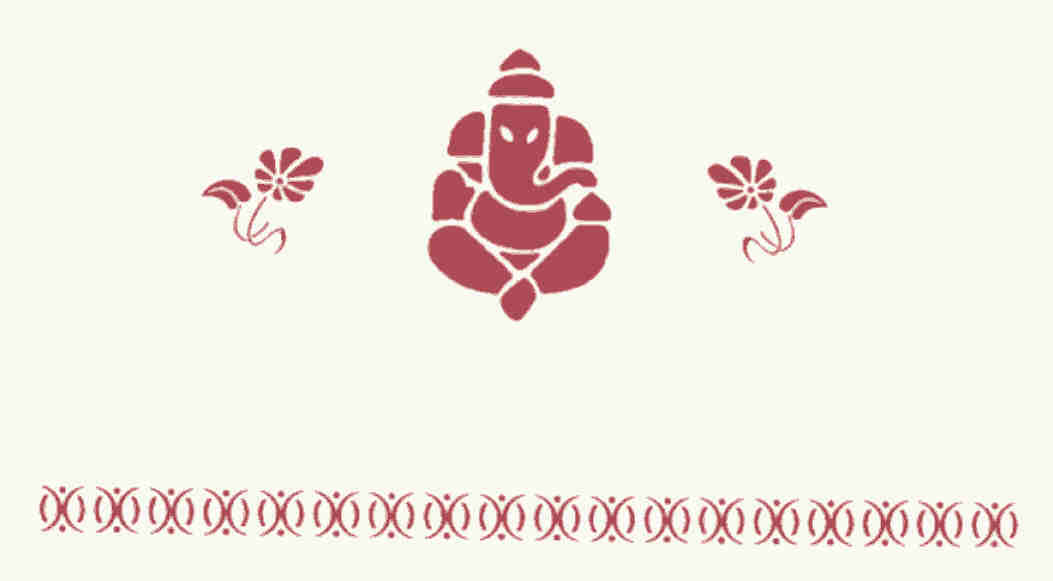

In introducing this presentation,
a few words on the background from which it took shape, may be appropriate.
In the year 1990, at the age of 61, I was felled by a stroke,
that left me wholly paralysed on my left side.
The fact that I pulled through and retrieved sufficient motor function
through seven years of rehabilitative therapy, left me
convinced that there was some divine dispensation in this, and perhaps
some unfinished work I had yet to complete. The only activity that
was really open to me, was to take
to my paint brush again. Perhaps, I
thought, it was here that my unfinished work lay. My lifelong
passion for painting, of course, provided the driving force. Thus
it was that I started and completed
a series of 30 paintings of flowers
that have figured in the Indian
religious tradition. And I made them
my humble offering to the deities that seemed to have stalled
my departure in 1990. The paintings were
displayed in an Exhibition in the Shrishti Gallery at Hotel Chola
Sheraton, Chennai, from the 4th. to the
9th. April, 1999, under the thematic title "A Divine Thought
- Flowers for Deities". My grateful
offering was, not a garland of flowers, but
a garland of paintings of flowers.
"Flowers are the smile
of the Divine", said the Mother of Pondicherry. At a time when
I saw only colour and beauty in flowers, I owe it to her that she opened
my eyes to their divinity. Flower,
fruit and leaf offerings have, since time
immemorial, had a central place in Hindu religious tradition and
ritualistic procedure. Every God or Goddess
has his or her favourite and these flowers and leaves are often
specially grown in tanks,
gardens and orchards attached to temples, for
use in every day worship. The
texts of prayers
and devotional hymns, the Stotras and Sahasranamas, in Sanskrit
are replete
with references to the names of these flowers as seen from the following
examples :
The 21 stanzas of Ekavimsati
Pushpapuja { @kiv<zit
pu:ppUja ) lists 21 flowers and 21
leaves with which to worship Ganesa,
and typically one of these stanzas refers to the Wild Weed
(Erukka) thus :
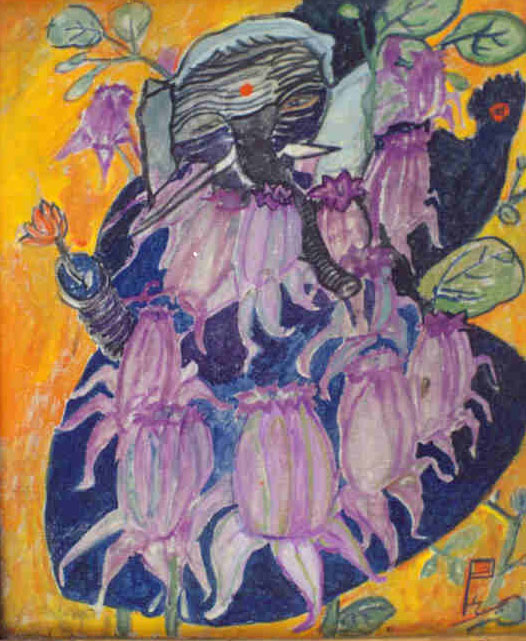
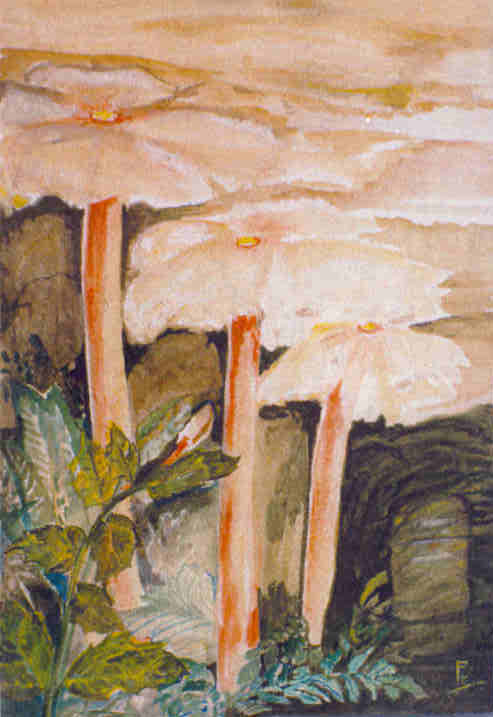
The Weed flower (Erukka) for
The Midnight Blossom (Parijatha)
GANESA
(blown up to tree size} for SIVA
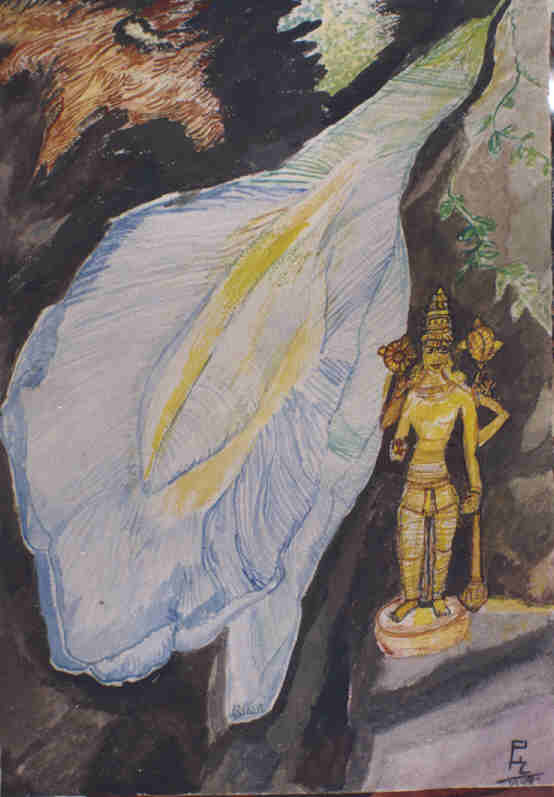
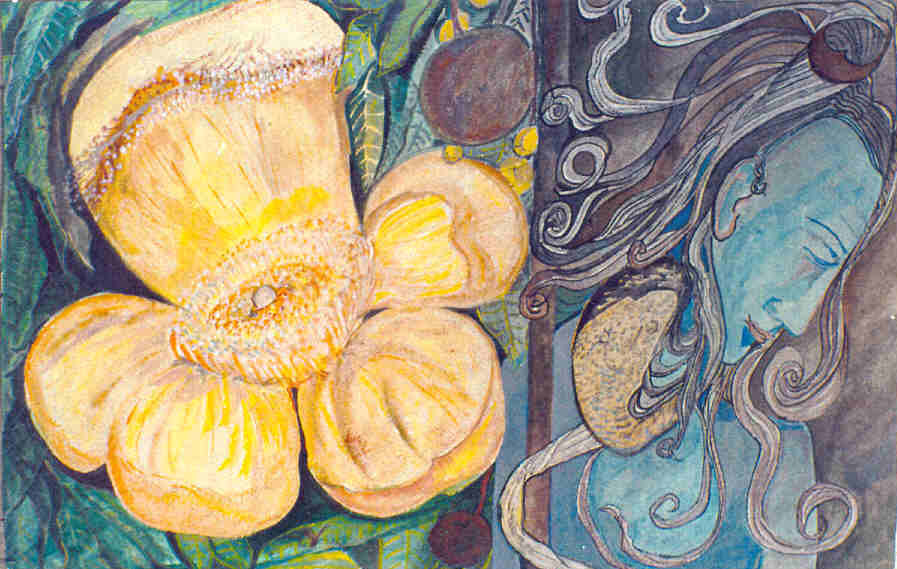
The Conch (Sangu) for
The Nagalinga for
SIVA
SIVA

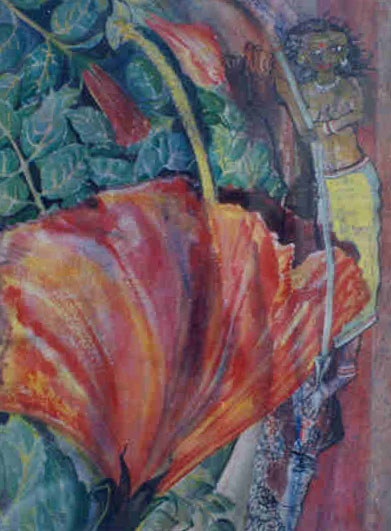
A bed
of Lotuses for
The Hibiscus for
Vishnu
Devi
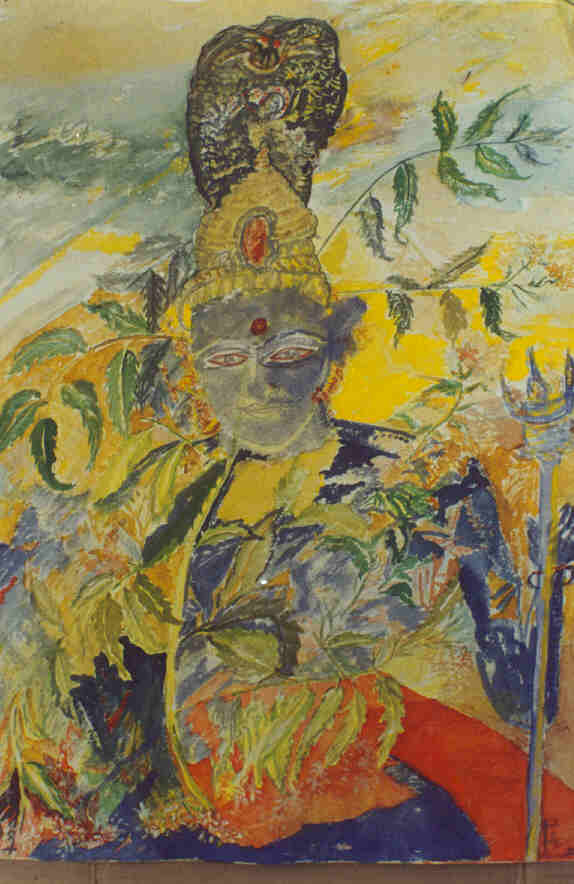
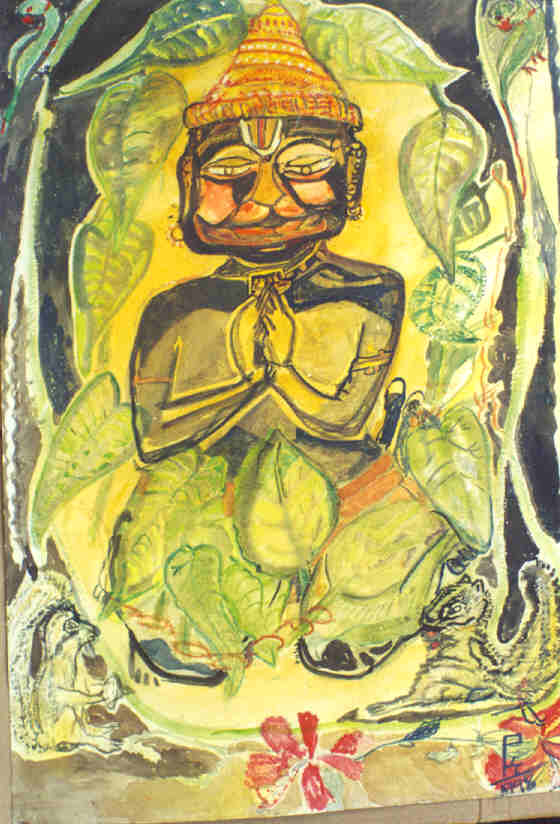
Neem leaves for
A garland of betel leaves for
Bhagavati
Hanuman
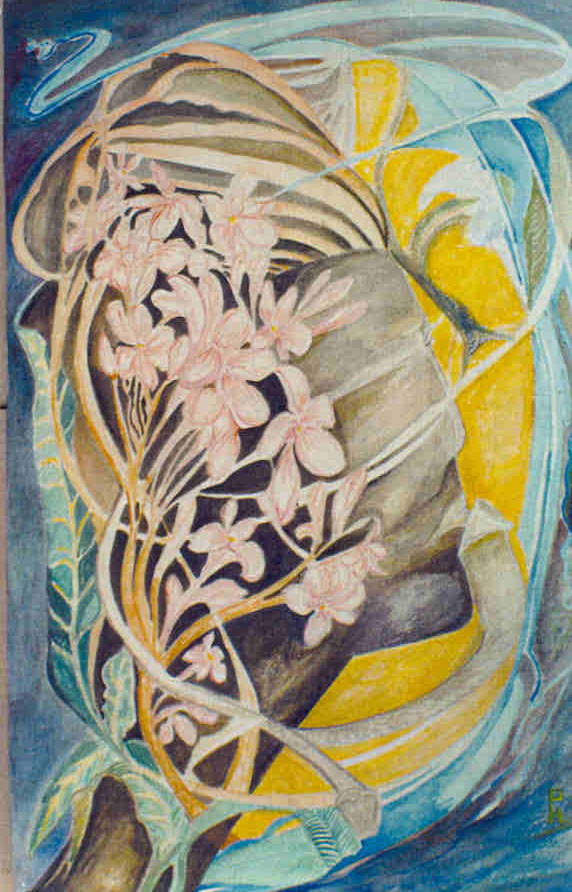
Name
: Mrs. Padma Krishnamurthy
Date of Birth
: 01-05-1929
Education
: B.A.(Economics), Queen Mary's College, Chennai.
Occupation
: Housewife, Amateur Painter & Arts
Teacher
Arts Training
: Under Sushil Kumar Mukherjee
Awards :
1948, 49, 50
- Award for Water Colour works - All India Congress Exhibition
Solo Exhibitions :
1958, 1968
- Coimbatore
1960, 1971
- Lawley Institute, Uthagamandalam
1964
- Max Mueller Bhavan, Chennai
1968
- Artist's Centre, Mumbai
1967 to 72
- Wellington Gymkhana, Coonoor.
1970
- Bangalore
1972
- British Council, Chennai
1978, 1983
- Lalit Kala Academy, N.Delhi
1978, 79, 80
- Participated in National Exhibition.
1990
- Vimonisha Gallery, Chennai
Commissions
: By Eastern Command a series on the Pakistan/Bangla
Desh War